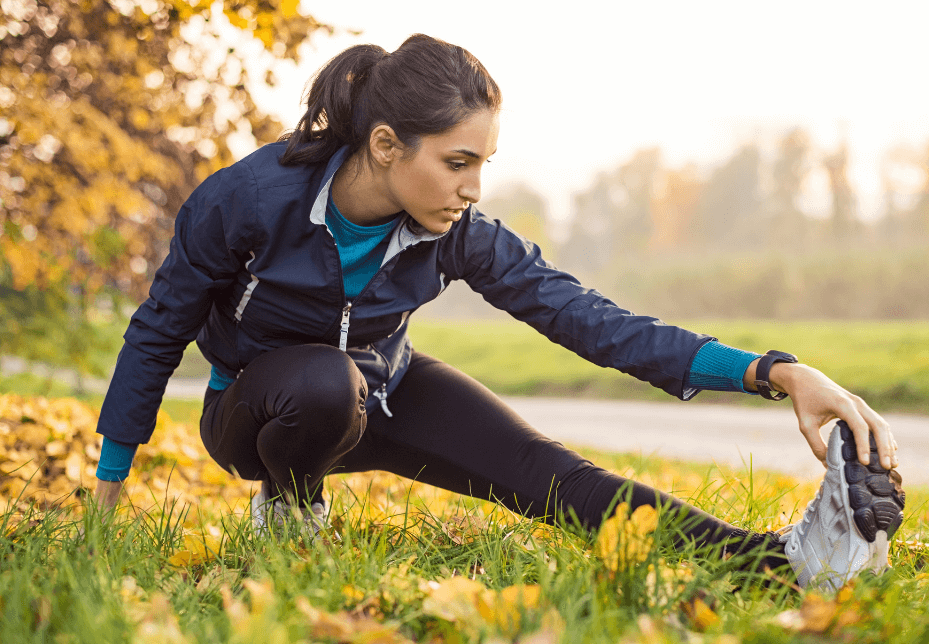Ever noticed how your ability to exercise changes over the month?
You feel bloated and like the core muscles don’t want to work?
You try to go to the gym or for a run and your legs just run out of steam?
Craving sugar and feeling hungry all the time if you exercise?
You feel exhausted more quickly if it’s hot or humid?
WHAT IS GOING ON WITH MY BODY? – hormones are going on!
Women are very different to men physiologically and it’s time we started training to optimise our performance with our cycle, not pretending we are Men and expecting the same performance day to day or week to week!
I have recently read Roar by Dr Stacy Sims- it’s a must read for any women who wants to exercise and perform through all periods of life! Pun intended 🙂
In this blog I’m going to explain briefly what I learnt from the book combined with some other research and personal/professional experience.
- Listen to your body. Use an app to track your cycle (even if you are on a contraceptive which stops your bleeding and you’re not sure if there is any difference week to week). I use the App called Flo, where you can personalise what you record – including exercise (and how your felt), vaginal discharge, skin condition, libido, sexual activity, mood and pain. That way when your skin looks like you’re a teenager again, your jeans feel too tight and you don’t want to do high intensity exercise you’ll have some insight into why this might be the case!
- Understand your cycle. Here’s some basics on how your cycle works that you may have forgotten or never been taught in high school. Day one of the cycle is when you start bleeding. The first half of the cycle until you ovulate is called the follicular phase or low hormone phase when the ovary is preparing the egg to be released. After ovulation until your next period is the luteal phase or high hormone phase when the egg has been released and the body is preparing for a pregnancy. A large number of the women we work with at Pelvic Health Physiotherapy will be on some form of hormonal contraceptive. These all have different mechanisms to prevent pregnancy, and women can react very differently to each type.
- Low hormone phase / Follicular phase: The time when we are most like a man! Optimal athletic performance, strength gains at the gym, best recovery and muscle building and optimal use of energy stored in our muscles for bursts of high intensity activity.
- High hormone phase / Luteal phase: The time when our body starts to prepare for pregnancy. Mood swings, less ability to use energy stored in our muscles while exercising at higher intensities, higher core body temperature, reduced performance in hot and humid conditions, increased fluid retention- aka bloating/ tight skinny jeans, carb/sugar cravings.
SO WHAT CAN WE DO?
1.Time your workouts. Exercise more in the first 2 weeks of your cycle. plan your events/long runs (as much as possible) to be in this phase. A study showed better strength gains in resistance training if more sessions are completed in the first 2 weeks and less in the 2nd when compared to evenly spread out sessions over the cycle.
2.Allow for recovery/be gentle. In the last 2 weeks of the cycle spread the sessions out more to have more recovery and do lower impact/intensity training e.g lower intensity training, flexibility and strength sessions with lots of rest, Yoga, pilates. For women who can notice an increase in symptoms of prolapse or incontinence during the high hormone phase it is especially important to modify activities.
3.Eat to optimise performance. In your high hormone phase especially (for more info on nutrition check out the book or see a dietician). Try to eat some carbohydrate prior to a work out e.g eat a banana or muesli bar, to help counter the effects of poor glycogen utilisation (using the sugar stored in the muscles). After the work out eat some protein ideally within 30 minutes e.g eggs or a protein shake, to give the muscles the building blocks to repair. The high sex hormone levels hinder protein building to repair the muscles.
4.Stay cool. If you are training or completing in hot or humid conditions be aware that your ability to adapt to this and perform will be less in the last 2 weeks of the cycle. Heart rate may be higher at lower intensities. Drink cold water straight after, have cold flannels ready, dunk your hat/head band in the stream, take a cold shower, swim in the sea in Wellington.
5.Embrace your wonderful body and mind. Our bodies are amazing. The more we understand and work with our body the better chance we have to stay strong, flexible and healthy throughout our lifespan. Let’s be the strong, healthy and body confident role models for generations of women to come.
About Stephanie: Stephanie Jones is a pelvic health physiotherapist, yoga and pilates teacher and enthusiastic trail runner! She is a valued part of the team here at Pelvic Health Physiotherapy.
References:
Roar. Dr Stacy Sims. Available on book depository.
Effects of the Menstrual Cycle on Exercise Performance
Xanne A.K. Janse de Jonge, Sports Med. 2003;33(11):833-51
Exercise performance over the menstrual cycle in temperate and hot, humid conditions.
Janse DE, Jonge XA, Thompson MW, Chuter VH, Silk LN, Thom JM.
Med Sci Sports Exerc. 2012 Nov;44(11):2190-8. doi: 10.1249/MSS.0b013e3182656f13

